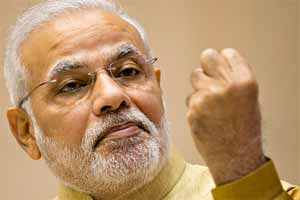The BSE Sensex may have scaled several new peaks last year, heralding what many believed was the start of a secular bull run, but 2014 was a year in which foreign funds fell for Indian bonds. At $26.4 billion, the flows into the debt market far outweighed those into the equity markets at $16 billion, the first time ever that interest in bonds has been higher than that in stocks. Close to $14 billion was pumped into gilts alone and at a return of some 16%, the 10-year benchmark rewarded investors like no other emerging market or Asian sovereign paper.
Equity fund managers went home rich too: Buoyed by the Modi wave, Indian equities posted their best returns in five years at 30%, pretty much outperforming markets across the globe, save China, and notching up, by the end of the year, a market capitalisation of R100 lakh crore. It was also a year that saw the return of the retail investor — flows into mutual funds increased as did cash volumes in the secondary market. The market was re-rated: From a one-year forward price-earnings multiple (P/E) of 13.5 times in March, the multiple had risen to 16 times in July.
Not many are expecting an encore in 2015; returns could be 15-16% at best, say brokerages.
But it is possible foreign portfolio investors (FPIs) will continue to chase bonds in 2015 too even if interest rates are tipped to come off, given the coupon rates will still be way higher than in most other economies. As Ananth Narayan G, regional head, financial markets, South Asia, Standard Chartered Bank, says, until interest rate differentials remain in India’s favour, flows will continue. The 10-year benchmark 8.40%, 2024 bond yield has plunged 93 basis points to 7.88% since January, the biggest annual fall since 2008, but remains among the highest in EMs. Sidharth Rath, president, treasury and business banking at Axis Bank, believes the yield could ease to 7.50% by March.
Despite interest rates remaining high, the Sensex rallied more than 6,000 points to a record high of 28,822. There was hope the BJP-led NDA government would usher in reforms to put the economy back on track which, in turn, would drive up corporate earnings. The steep drop of close to 50% in global crude oil prices boosted sentiment as did the anticipation interest rates would fall as inflation eased. While lower commodity prices and cheaper money are priced into estimates, much will depend on how quickly the government implements economic reforms. “The government may want to engage with other political parties and opposition-ruled states in order to ‘sell’ its economic vision,” Kotak Institutional Equities wrote in a recent report.
Nevertheless, last year’s record flows inflows helped the rupee gain 5% in the first six months and stay stable thereafter in a narrow band of 61.50-62.50 to the dollar, before falling off to levels of 63 in December.
The Reserve Bank of India shored up the the country’s forex reserves, which showed an accretion of around $26 billion during the year. The RBI, however, is concerned high inflows into the debt markets could trigger volatility.
“Heightened interest in debt may create volatility in domestic debt markets despite some evidence that foreign portfolio investors are taking a longer-term view,” the RBI noted in the recent Financial Stability Report.
The government reshuffled sovereign debt limits in July reducing the quota for long-term investors by $5 billion and raising that for FPIs by $5 billion to $25 billion. Quotas for corporate bonds were left unchanged at $51 billion. FPIs doubled their holdings of Indian paper to $51.3 billion during the year, lured by high returns, a relatively stable currency and a belief that interest rates were headed down. Once the quotas for gilts crossed 90%, in September, the auction mechanism was triggered; with only a small quantum left, premiums soared hitting 86 basis points at the last auction. Once gilts were sold out, FPIs bought more corporate bonds — as of now 59% of the $51 billion limit has been used up.
In the equity markets, cash volumes jumped 40% while mutual funds saw inflows into equity flows of more than Rs 45,000 crore; brokers breathed easier. Mid-cap and small-cap companies staged exceptional comebacks, yielding more than 50%.


